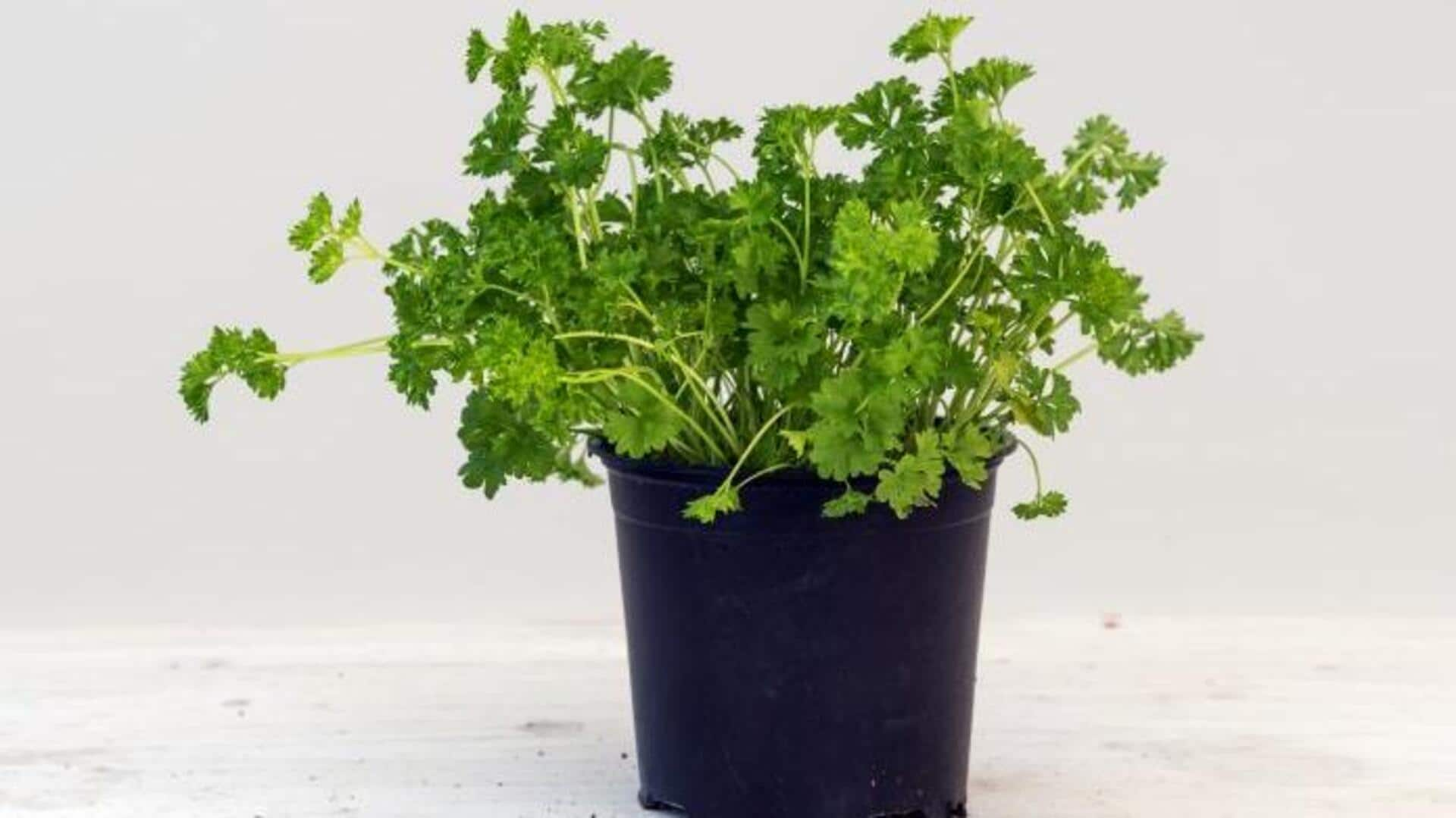
How to grow parsley at home
What's the story
Growing parsley indoors can be a fulfilling task, giving you fresh herbs for your cooking. This versatile herb isn't just easy to grow but also adds a dash of flavor to several dishes. Given the right conditions and care, you can grow parsley in your home throughout the year. Here are some handy tips and tricks on how to grow parsley indoors, ensuring a constant supply of this aromatic herb.
Container selection
Choosing the right container
Selecting an appropriate container is crucial for growing parsley indoors. Pots at least six inches deep with drainage holes to prevent waterlogging should be your choice. Clay or plastic pots work well as they retain moisture while allowing excess water to escape. Make sure each pot has a saucer underneath to catch any runoff and keep your surfaces dry.
Light requirements
Providing adequate light
Since parsley loves bright light, it is important to keep your plants near a sunny window or underneath fluorescent lights in case of insufficient natural light. Aim for a minimum of six hours of sunlight per day or employ grow lights on a timer for 12-14 hours daily. Regularly rotate the pots so that all the sides get equal exposure and grow evenly.
Soil preparation
Maintaining proper soil conditions
The soil used for indoor parsley should be well-draining yet capable of retaining some moisture. A mix of potting soil with added perlite or sand works effectively. Before planting seeds or seedlings, ensure the soil is slightly moist but not soggy by watering it lightly and allowing excess water to drain away completely.
Care routine
Watering and fertilizing tips
Watering parsley needs attention; keep soil evenly moist but don't overwater it as it could cause root rot problems later. Check moisture by inserting your finger into the top inch of soil; if dry, it's time to water again gently until you see drainage from below each pot's base hole. Fertilize every four weeks with balanced liquid fertilizer diluted according to instructions on packaging labels- this maintains healthy growth rates throughout their lifecycle indoors.